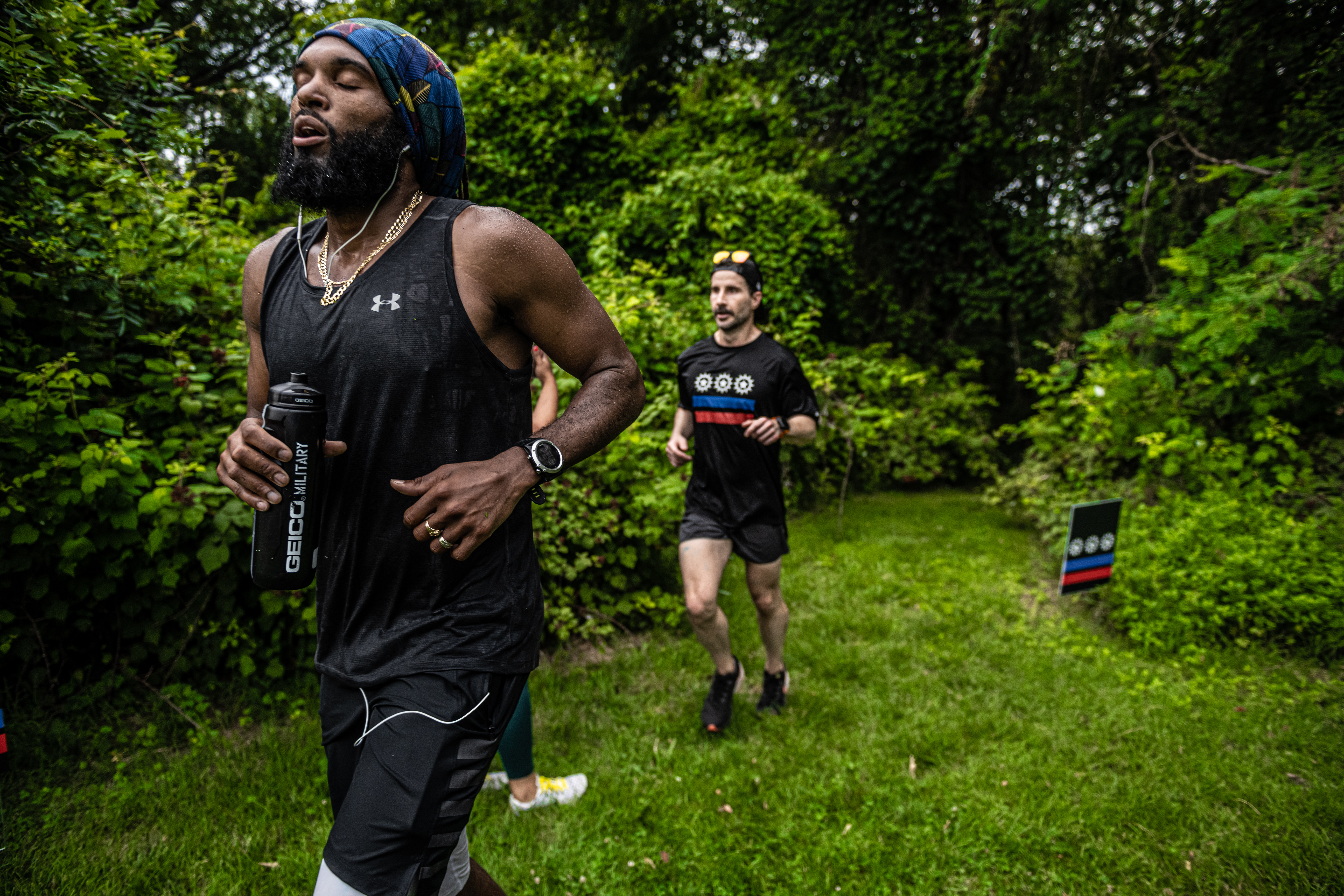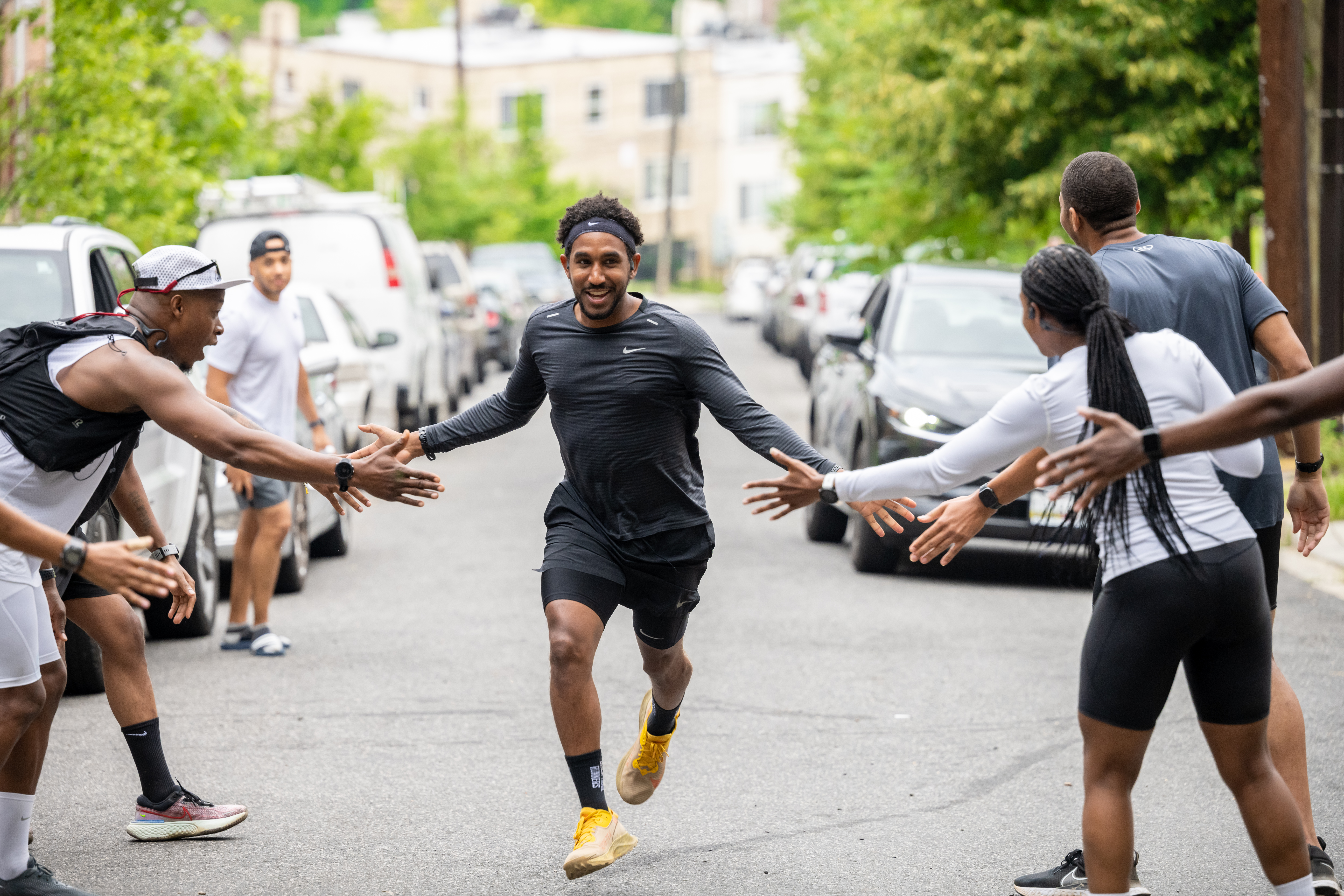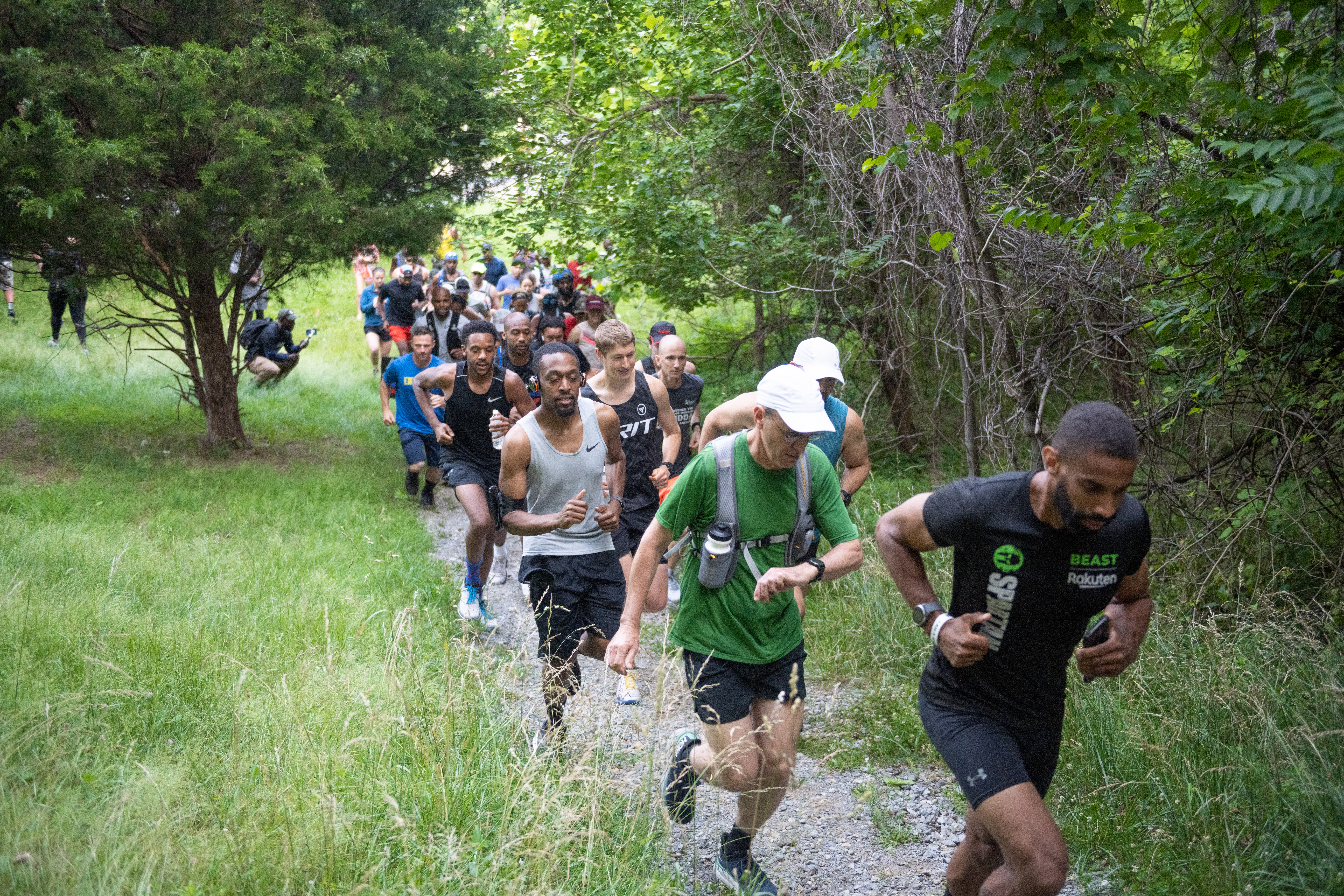This is Not
the End
Words by Emma Zimmerman
Photography by Danelle Hankins & Grant Langford of The Hankins Photography Group

A steep hill appears in the final section of the Juneteenth Half Marathon in Washington DC. In 2021, athletes who had just finished the 10K lined both sides of the street, forming a de facto finishing chute. They clapped and cheered as leaders of the half marathon climbed the Green Street hill. The finishers were overwhelmed by that familiar end-of-race-feeling: lactic legs, hazy brain; all channeling into a tunnel-vision focus to the finish line. But as runners crested the hill, their breathing heavy and their legs hastening to a kick, they quickly realized: this is not the end.
The course extended onto a dirt path. Roughly one-tenth of a mile remained. “Keep going, keep going,” race director Freddie Irby recalls spectators cheering. To him — and perhaps to others watching — the metaphor was clear. Running is not the only place where the finish line is nebulous. Running is not the only place where legs grow heavy from past toil: 13 miles is not the same as 157 years. But both require a willingness to push forward. “Juneteenth is more forward-looking than backward-looking,” says Irby. “And don’t get me wrong, I want to be absolutely clear about this: the history is important, and people should know it. But, knowing the history isn’t the goal. The goal is future action to try and better ourselves.”
To Irby, the choice of this trail is not only historical. The Civil War Defenses of Washington Trail lies on the east side of the Anacostia River – an area that is largely residential, predominantly Black, and generally underserved (“You can probably count the number of grocery stores east of the river on one hand,” says Irby). Thus, the Juneteenth Half Marathon course draws inspiration from past and present-day inequity. Still, it unifies the running community to push towards future goals.
And these goals, it seems, are two-fold. Historically, distance running in the US has been marketed as a predominantly white sport – we see it in ad campaigns and road races. Irby hopes that an event centered around Black history, with participants of various races and ethnicities, will appear more welcoming to non-white individuals. He also hopes this event will unify disparate groups in the DC running community. Perhaps, they can channel their collective energy towards better resources. While countless running groups exist in DC and the surrounding area, no indoor track is accessible to the public. Irby cites organizing efforts, led by local runners, to build a public indoor track. He imagines a more inclusive running community with more resources at its disposal – a vision that can only materialize through collective action. “I’m talking about the running community as a whole, coming together to really try to better our situation,” he says.

Talking to Freddie Irby, you get the sense that you’re talking to the mayor of somewhere, or something. But Irby is not a mayor. He’s the next closest thing: an innkeeper who operates a bed and breakfast in DC; a podcast host; and a running community leader with a penchant for storytelling. He knows everyone.
“There are key people in your running journey that are such – what’s the right word – they’re just central figures that know all the running groups.” says Malik Al-Jame, an avid runner and finance professional who trains with multiple groups in the DC area. “They’re connectors. Fred [Irby] is one of those.”
Irby’s own running journey began quickly and humbly – new to DC, a poker buddy invited him to join the Capitol Hill Running Club. To meet the club, he wore Reebok classics – those low-profile, 90s-esque sneakers with near-zero tread – alongside cotton sweatpants and a pedometer he won at a festival. No watch. No technical fabric. His attire was casual, and so was his attitude. His first race was the Marine Corps Marathon in 2010. He didn’t buy his first running watch until 2019, which was also the year he signed up for Strava and began taking his training more seriously. He planned to run the Vancouver Marathon in May 2020.
But a month into the COVID-19 lockdown, all races were canceled, so Irby called up a friend with whom he’d been training for Vancouver. “Why don’t we do it ourselves?” Irby asked. He often built his own routes on Strava; he could easily trace 26.2 around DC. “But why don’t we push it back a month?” he said. “So that puts us around…. June 19th? Yeah, Juneteenth.” The Juneteenth Marathon, they began to call it.
After a series of offhand conversations – hey, Freddie, why are you running 18 miles this weekend? Are you training for something? – word of the Juneteenth Marathon spread. Other local runners wanted to join in. Emails ensued – an excel sheet with local runners’ names, some forwarding, more names. On the day of the Juneteenth Marathon, ten athletes showed up for the full marathon, fifteen ran a half marathon, and twenty community members volunteered on the course. The run spanned all four quadrants of DC before finishing outside the home of famed abolitionist, Frederick Douglass. The gates to the property were open. So, there the runners stood, after 26.2 miles, nearly knocking on Frederick Douglass’s door.
Upon seeing race day photos on social media, more runners expressed interest. Irby filed for the Juneteenth Marathon nonprofit and trademark, and secured grant money to formalize the event. Next year, he decided, they would run again.

For 2021, Irby and other volunteers decided on a half marathon course – out and back on the Civil War Defenses Trail – with a 10K option. About 160 runners signed up. In photos from the 2021 event, there’s an unmistakable sense of camaraderie: black t-shirts with Juneteenth flags on the front; high-five tunnels; the typical race-day faces, but more smiles than grimaces, despite the mileage, or perhaps just owing to the day.
By the first week of June 2022, roughly 500 runners had signed up for the third annual race. A tradition was born and growing.
“When you see such a large running group – so many different backgrounds, races, and ethnicities represented, it really highlights Juneteenth,” says Al-Jame, reflecting on the 2021 event. “Whenever you run for a cause, you take a deeper look. You say, okay what are people running for? What is this run about?”
Well, the simple answer is Juneteenth – emancipation and its legacy. But if you ask Irby, and various participants, it’s about exercising a sense of agency within a community.
“There aren’t many races, let alone trail races, that are specifically geared towards the African American experience,” says Alison Staples, a DC-based running leader and physical therapist assistant. “This race is important to all participants because it highlights our history…[and] the growing awareness that black runners are present in all communities.” Before the 2021 event, Staples led a pre-run stretch. Participants circled around her in Fort Stanton Park, arms over heads, leaning to their sides, swinging legs. When they were done, the race began, promptly at 6:19am.
Tim Hughes, triathlete and public health professional, says the Juneteenth Marathon provides a platform for runners to collectively come together, not just on race day, but afterwards too. They can leverage their agency and resources for social impact, to further benefit their communities. He cites how various local businesses and organizations, including Pacers Running, have supported the race. But Hughes also reflects on that steep, Green Street Hill – the 14.6% grade that was not, in fact, the end.
It’s a reminder to keep working. Or, as Irby might say, the agency to keep working; to decide what the work will look like, and how to bring a community together to impact change. “If you built a car, you wouldn’t look at cars in a dealership the same way,” says Irby. “That’s what Juneteenth is about for me. It’s about a new sense of agency. The pandemic forced us to do [this race] ourselves. So, we can do this ourselves. But in doing it ourselves, let’s make sure we really understand the value we can get out of it.”
The 2022 Juneteenth Half Marathon and 10K will take place on Saturday, June 18th at Fort Stanton Park in DC. To learn more about this event, donate, and/or get involved in future Juneteenth races, visit www.juneteenthmarathon.com.
